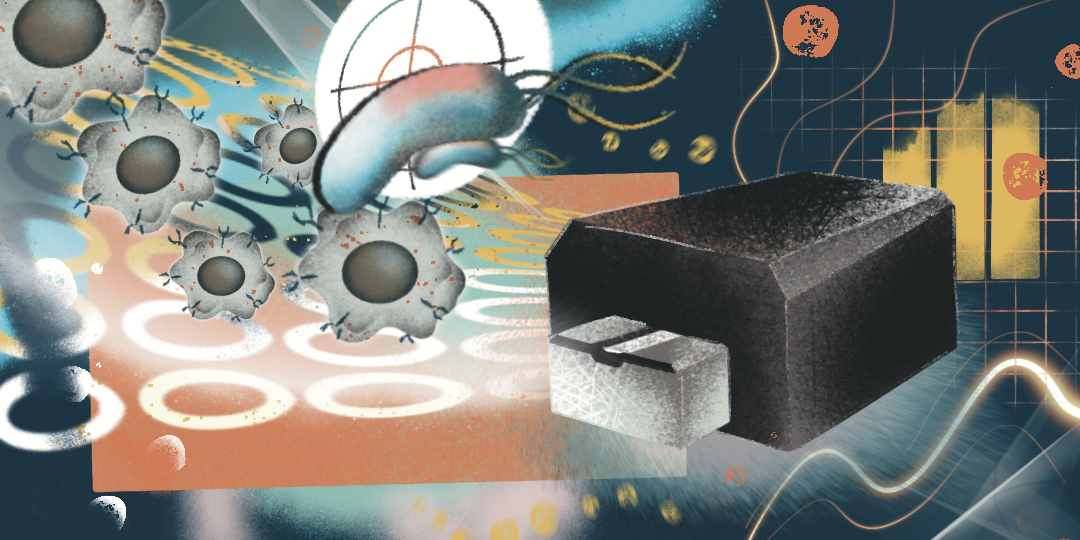Sterility Testing Tools: A Phenotypic Perspective on IMC and Compendial Methods for Cell and Gene Therapy
Cell and gene therapies hold the promise of treating, and potentially curing, a variety of diseases. Ensuring the sterility of these therapies is not just about compliance; it's about patient safety. With therapies that can alter the very building blocks of life, there's no room for error. We need advanced sterility testing tools that can keep pace with the innovations in therapy development.
In the intricate world of cell and gene therapy, ensuring the sterility of Advanced Therapy Medicinal Products (ATMPs) is key. As these therapies pave the way for revolutionary treatments, the tools used to guarantee their sterility must be equally groundbreaking. Among these methods are the phenotypic-based sterility testing tools, with a spotlight on Isothermal Microcalorimetry (IMC) and the compendial method for sterility testing (traditional culture).
Compendial Method: The Traditional Approach
The compendial method offers a straightforward approach to sterility testing. By cultivating samples on nutrient-rich plates, microbial growth is monitored. It requires the culture of samples in two different media types. These two different types of cultures are incubated for 14 days to promote the growth of residual anaerobes, as well as aerobes and fungi. This method has been around for years and it is the undisputed gold standard.
While it's a tried-and-tested method, we all know about the limitations such as:
- Time-Consuming: One of the primary drawbacks of plating is the time it takes to see results. Depending on the microorganism, it can take days to weeks for colonies to form, which can delay the release of time-sensitive products.
- Lack of Sensitivity: Plating might not detect low levels of contamination, especially if the contaminants are slow-growing or require specific conditions not provided by standard media.
- Sample Volume: Large sample volumes might be needed to detect contaminants, which can be problematic for products available in limited quantities.
- Non-Culturable Microorganisms: Not all microorganisms can be cultured on standard media. This means that some contaminants might go undetected using the plating method.
- Environmental Factors: Factors like temperature, pH, and oxygen levels can influence the growth of microorganisms on plates. Any deviation from optimal conditions can lead to false negatives.
- Human Error: The plating method is manual and can be prone to errors, from sample handling to colony counting.
- Interference from Product Components: Some components of the product being tested might inhibit microbial growth on plates, leading to false-negative results.
In the context of cell and gene therapy, these limitations can be particularly concerning. The therapies are often high-value, low-volume products, and have a short shelf-life, making the traditional compendial method less suitable. Moreover, the time delay in obtaining results can be a significant drawback in the fast-paced world of cell and gene therapy.
IMC: The calScreener™ Advantage
Isothermal Microcalorimetry, particularly the calScreener™, has emerged as a strong alternative method in sterility testing. Its advantages are various:
- Speed: Compared to traditional detection, the calScreener™ delivers rapid results, making it invaluable for time-sensitive therapies.
- Optimization for Small Volumes: Designed with precision, the calScreener™ is especially good at handling small sample volumes, ensuring accuracy without wasting valuable product.
- Complex Sample Handling: Whether it's a simple fluid or a complex biological sample, the calScreener™ processes it without the need for additional preparation, distinguishing contaminants even from mammalian backgrounds.
While Isothermal Microcalorimetry (IMC), offers a transformative approach to sterility testing, it's essential to consider some of its nuances. The initial investment for procuring an IMC instrument can be substantial, potentially challenging smaller labs or those operating on tighter budgets. Additionally, the technique requires some specific knowledge; while the operation is straightforward, mastering the interpretation of calorimetric data requires some training. Furthermore, regular maintenance and calibration are essential.
We at Symcel acknowledge and understand the nuances of IMC, therefore we have built robust solutions along with our customers. We ensure that our clients have calorimetric experts and proprietary analysis software available at all times. Also, we give prompt and proper training to clients to ensure that potential issues are mitigated. Additionally, we offer and ensure dedicated maintenance to all the instruments acquired by our clients, so that you always get consistent and accurate results. There is a common understanding that our clients' success is our success.
Future Trends: The calScreener™ and Beyond
As the field of sterility testing evolves, the integration of tools like the calScreener™ with emerging technologies promises to redefine the landscape. The calScreener™, with its real-time, non-destructive analysis, is positioned to play a pivotal role in this transformation, complementing other methods and setting new standards in sterility testing for ATMPs.
While compendial methods have their place, the future of sterility testing in cell and gene therapy is in advanced tools like the calScreener™. As we stride into a future where cell and gene therapies become more common, ensuring their sterility with precision and speed will be of the highest priorities.
Are you ready to revolutionize your approach to sterility testing in cell and gene therapy? Dive into the world of rapid, accurate, and innovative sterility testing with tools like the calScreener™.
Illustration by: Dr. Katrin Beilharz

